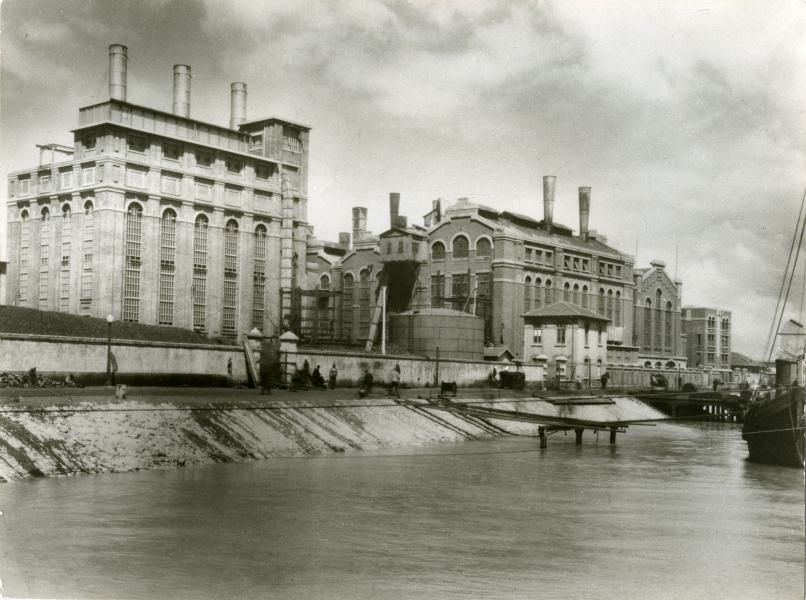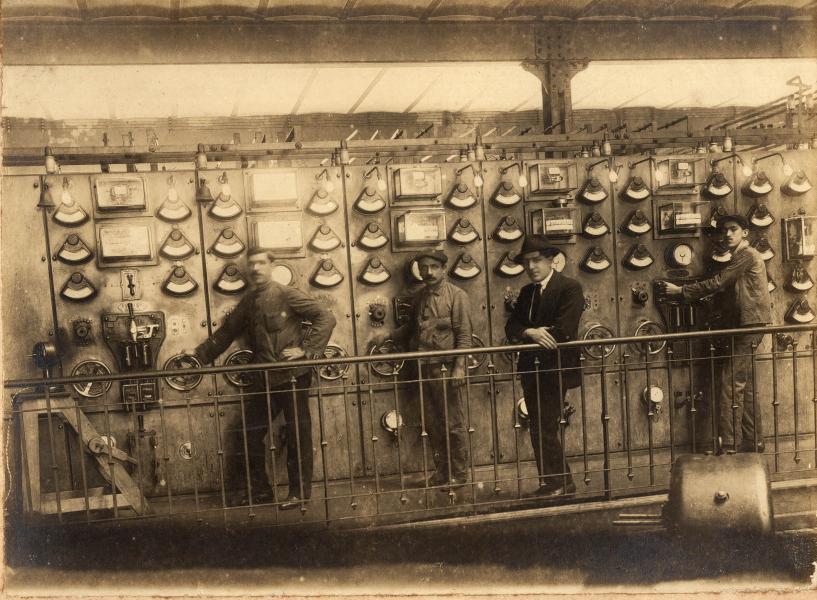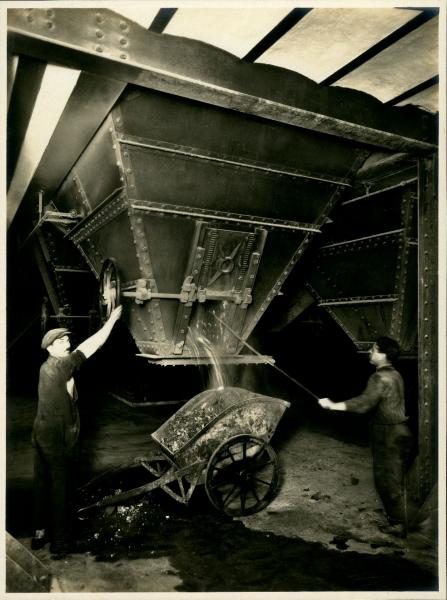The Tejo Power Station was a thermoelectric power plant owned by the Companhias Reunidas de Gás e Electricidade (CRGE – United Gas and Electric Companies) that supplied power to the entire Lisbon region. Built in 1908, its production activity took place between 1909 and 1972 although, as of 1951, it was used as a reserve power plant, producing only to complement the energy supply of the hydroelectric plants.
In 1975 it was shut down and removed from the production system. Over time, the plant underwent several modifications and expansions, going through continuous stages of construction and alteration of its production systems.
In a new phase in its history, the Tejo Power Station opened to the public for the first time in 1990, then as the Electricity Museum. After an additional period of restoration works on its buildings and equipment, it reopened permanently in 2006.
The permanent exhibition, named the The electricity factory, presents original machinery in a perfect state of conservation, telling the story of this old plant, as well as the evolution of electricity up to renewable energies. A science space with an industrial basis, this is one of the most visited museums in the country, especially by school audiences. This circuit includes an exhibition space entitled The History of Energy, opening in 2023. Here, visitors are invited to travel through the history of energy, from the past to our collective future, and with a focus on the challenges of the energy transition and sustainability. Visitors are challenged to be active agents for change by adapting behaviour to new global climate patterns.
, opening in 2023. Here, visitors are invited to travel through the history of energy, from the past to our collective future, and with a focus on the challenges of the energy transition and sustainability. Visitors are challenged to be active agents for change by adapting behaviour to new global climate patterns.
The Power Station is located in a building that is a unique example of industrial architecture dating from the first half of the 20th century in Portugal. The building, classified in 1986 as a Property of Public Interest, presents an impressive iron structure covered with brick, and its facades portray different artistic styles, from art nouveau to classicism.
The history of the Power Station
The Tejo Power Station began as a small electric power production unit.
It was built in 1908 and inaugurated in 1909 on land located on Lisbon’s riverside; the same site where it would undergo successive expansions and renovations that made it, for more than three decades, the largest power plant in the country, supplying electricity to the entire city and district of Lisbon, as well as the Santarém Valley. Designed by engineer Lucien Neu, construction was undertaken by the firm Vieillard & Touzet.
The Power Station was programmed to operate for a period of six years (1908-1914) until the necessary means were achieved to build a major power plant. If in 1909 Lisbon registered 1521 electricity consumers, a decade later it had reached more than 13500 consumers.
However, due to the circumstances created by World War I, the Power Station ended up extending its operation until 1921. That same year, the Lisbon Municipal Council decreed that public lighting would be electric, since the lack of coal during the war led gas companies to close down. This extension resulted in the production and distribution of electric power under extremely precarious conditions, a situation that delayed the city’s electrification process.
But the increase in electricity consumption made an increase in the Power Station’s production capacity essential. Therefore, at the end of the 1930s, there were 11 low pressure boilers in operation and five turbine generator sets. Ten Babcock &Wilcox (British technology) and one Humboldt (German origin). The machine room housed five generator sets of various outputs and brands: Escher & Wiss; Wiss, AEG, Stal-Asea and Escher Wiss/Thompson.




In 1941, in the midst of World War II, the high pressure boiler building was constructed.
The rise in the number of residents in the city of Lisbon and in the number of homes with electric power, forced the Power Station to increase its production despite the adversities caused by the conflict, such as a lack of fuel like coal and firewood.
The period of challenges to operate the Tejo Power Station did not finish with the end of the war, and in the years that followed, the plant faced increasingly higher consumption and charging points while difficulty to procure fuel remained.
Until 1950, the Tejo Power Station maintained its status as the largest electric power plant in the country, receiving successive power increases until reaching 60 megawatts.
The following year, the high pressure boiler building, the largest structure in the power station, was expanded to include an additional boiler: boiler number 15, which began operating on 19 September 1951, when the Tejo Power Station was already acting as a “reserve”.
As a Reserve Power Plant, the Tejo Power Station operated every year until 1968 (except in 1961).
It took its last breath in August 1972, two years before the April Revolution. That summer, opponents of the Salazar regime damaged the high voltage lines that supplied Lisbon, shrouding the city in darkness. Therefore the authorities turned to the old Tejo Power Station to minimise the lack of power. Former employees were called upon and boilers were turned on, reactivating energy production for the capital for one week, generating one fifth of the electricity consumed.




